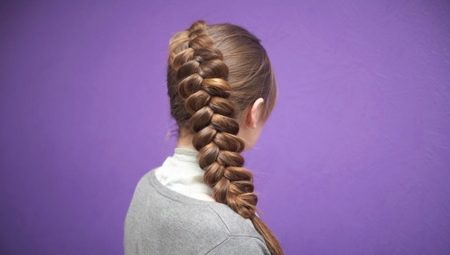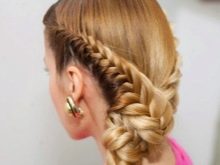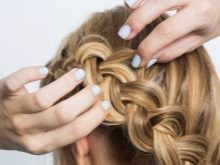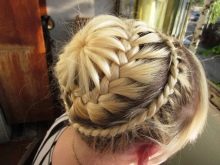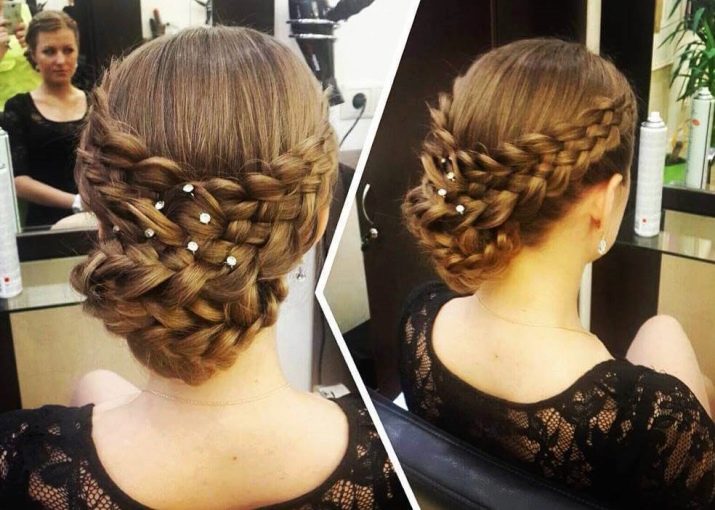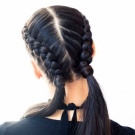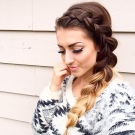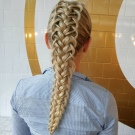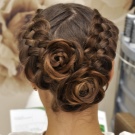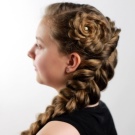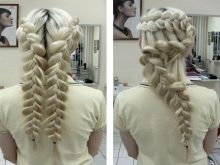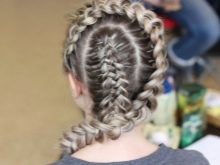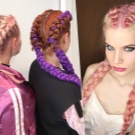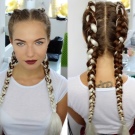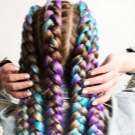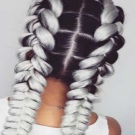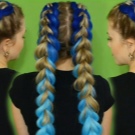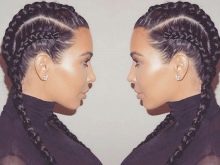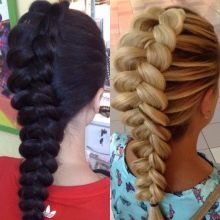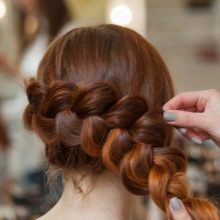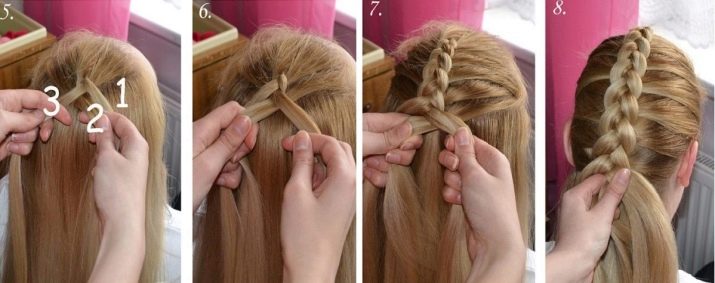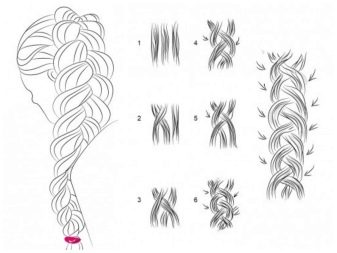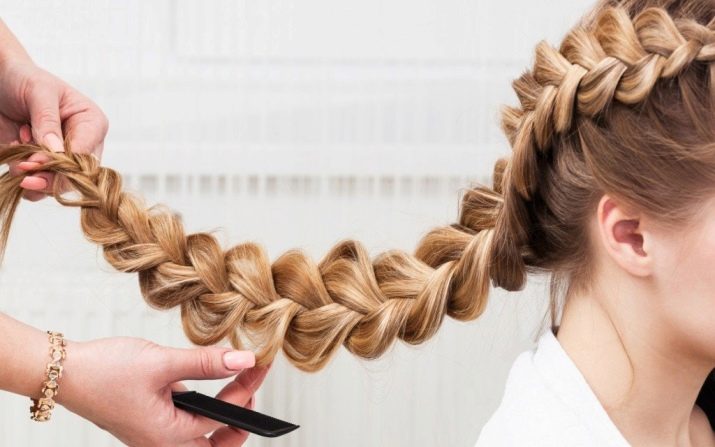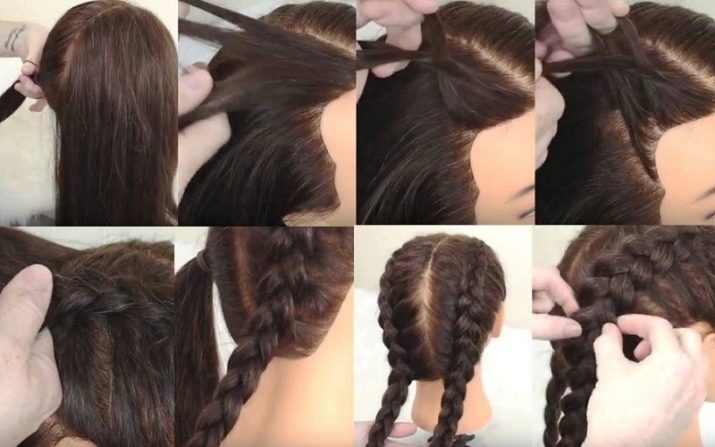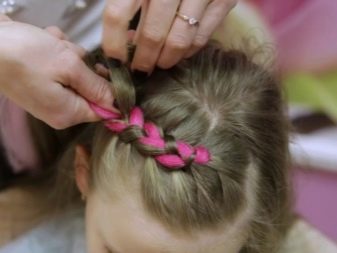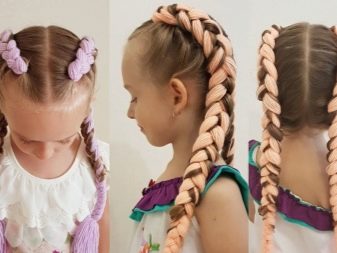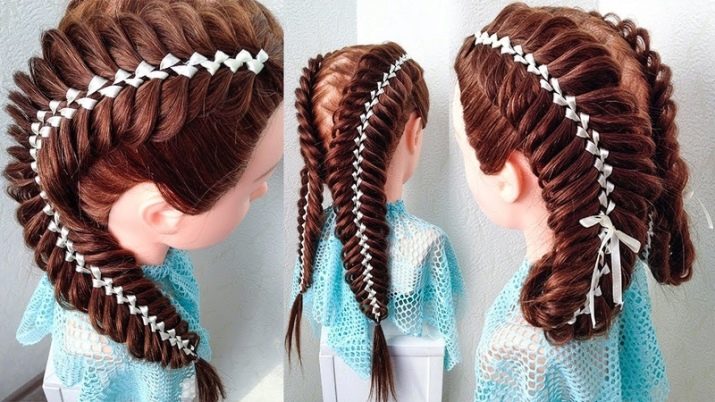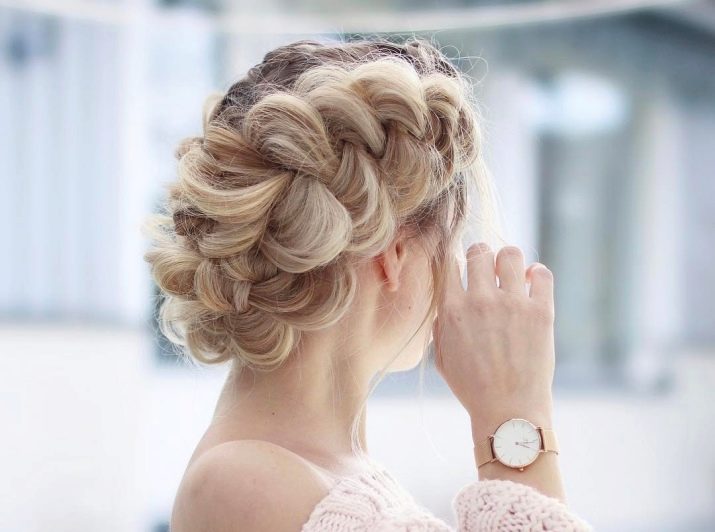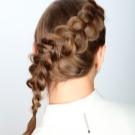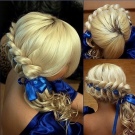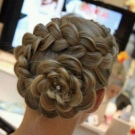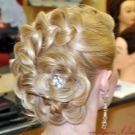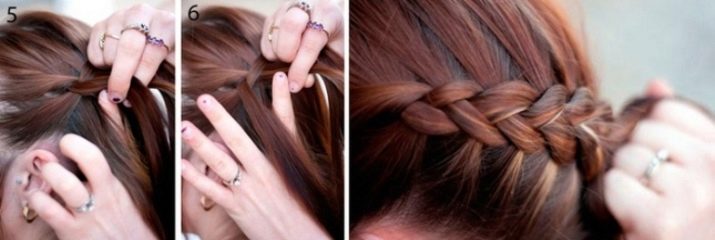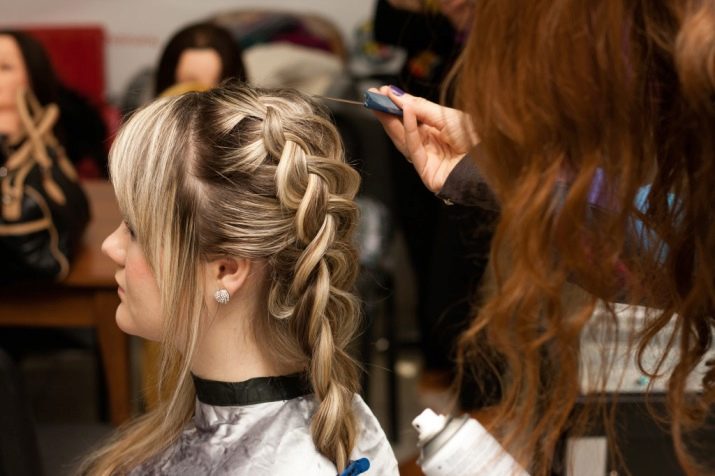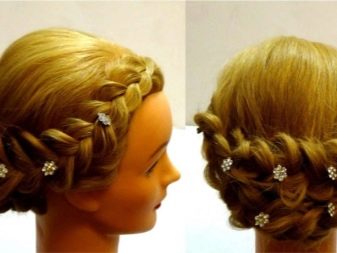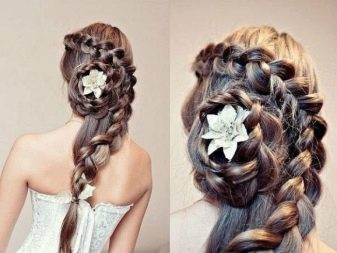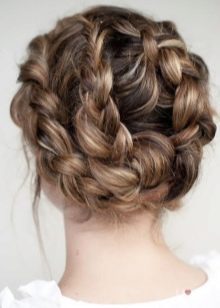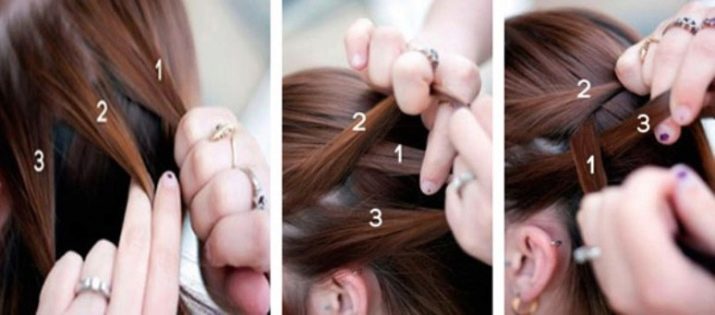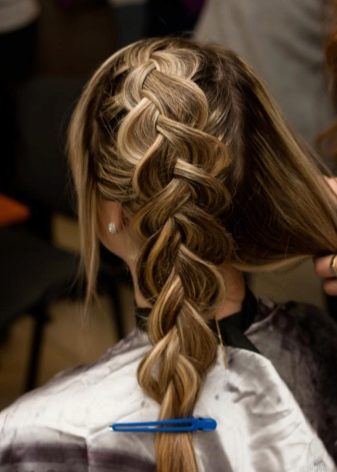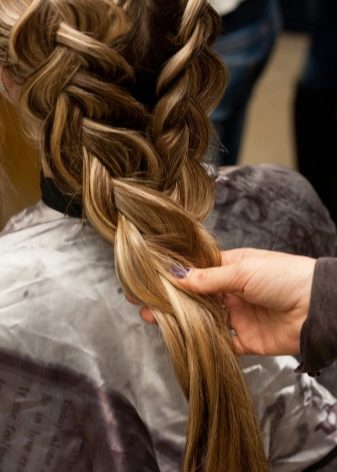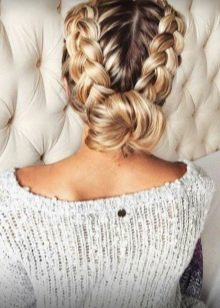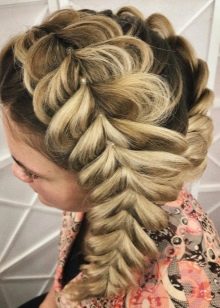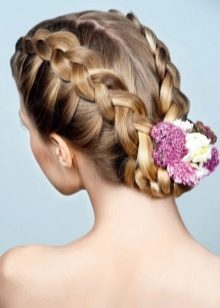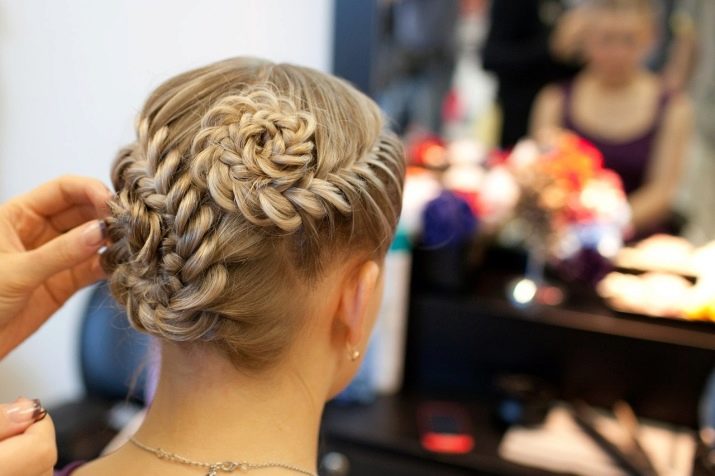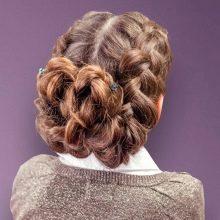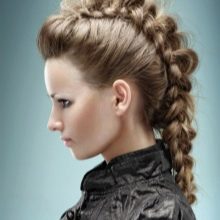Different types of braids on beautiful women's heads were in vogue at all times. And it is not surprising, because the braid is not only beautiful, but also very comfortable: the hair is braided, fixed, you can not be afraid that the hairstyle will fall apart from the wind or rain. The pigtail can be decorated with various accessories, and then the image will immediately become festive, evening.
Weaving there is a great many. But one of the most sought-after is the so-called French weaving, when hair strands are gradually woven into a pigtail as it is created. Stylists went further and came up with the reverse weaving of the French braid, which became very popular due to the fact that it turns out to be volumetric and looks unusual. With all the seeming complexity, weaving a French braid is pretty easy. In our article you will find a step-by-step description of this process, as well as get acquainted with some varieties of such weaving.
What it is?
I think everyone saw the hair, when the volume braid seemed to be “lying” on the hair. At the same time on the sides of her hair smoothed. This is the French braid on the contrary. Such a pigtail can trail from forehead to back of the head or from one side to another, it can be braided with a zigzag, basket, one or two braids can be created. Such weaving will become a beautiful element of evening styling, it is often made for a wedding, prom night.
In order to braid such a braid, you need to have a hair length at least shoulder length. But the latest fashion trends (weaving braids with Kanekalon) relieved beauties even from this condition. Now it is enough to have curls 10 centimeters long, so that there is an opportunity to weave artificial strands into them, and the weaving is ready.
By the way, note fashionistas: the fashion for the French pigtails inside out introduced the famous beauty diva Kim Kardashian. However, before her they were quite popular, however, in a specific area - among girls involved in martial arts. These braids even got the name “boxing”, as they were often made by athletes during competitions and training.
Their choice was explained by the fact that this hairstyle is convenient: hair securely fixed, do not interfere with action, while looking neat and well-groomed.
Schemes for beginners
Below are 3 step-by-step instructions for weaving French braids in reverse: weaving one pigtail in the center of the head, weaving two braids and weaving the braid obliquely.
One braid
Instruction:
- for a start we comb the hair well, we do not part it;
- we take a comb-tail or just a small comb with frequent teeth, and from the ear to the ear we separate a large strand of hair;
- we divide this strand into 3 parts, as for weaving an ordinary braid;
- further, mentally number the order: the one on the left will be number 1, in the center - number 2, on the right - number 3;
- grab strand number 1 and start it under strand number 2, and strand number 3 start at number 1;
- now No. 2, which was on top, we start as No. 3 and at the same time we separate a new strand from the main body of hair on the left, connecting it with No. 2 and weaving it into a braid;
- tuck the strand number 3 under this resulting thickened strand, add a new curl to it, which we take from the right side of the head, separating it with a comb;
- and then you weave this inverted French braid according to the algorithm: you place all the strands not over the braid, but beneath it, so you will have an inverted volume weave.
To give even greater splendor and texture to the spit, you can comb-tail or even your fingers a little to draw strands from it, creating a lace effect. Just do it carefully, otherwise your whole pigtail may dismiss.
In general, try to weave the braid tightly so that it fits well to the head, then it will hold on in its original form longer.
Two braids
The weaving algorithm will be the same. But since the spit is still 2, there are a few nuances.
- Decide on the style of your weaving: will the pigtails be braided neatly and tightly, hair to hair, or will they be a little careless, with a few strands released? In the first case, make an even straight parting, in the second you can make it slightly wavy.
- If you chose option number 2 and want to release a couple of curls on the face, do it before braiding the braids, in order to avoid the formation of "roosters".
- After you have parted your hair, tie one part of them in a bun, in order to avoid hairs falling on the other side of the head, where you will start weaving.
- Try to keep both braids at an equal distance from the parting, and also observe symmetry when designing this hair style.
- If you weave braids with kanekalonom, begin to weave it from the very beginning. To do this, attach Kanekalon to the first three strands from below with the help of the “Invisible Man”, which at the end of the process you can easily remove from the hair. Kanekalon will make your braids stronger and more resistant to external factors (wind, rain, even staying in bed), which will allow you to wear them, without unwinding, about a week.
- Instead of kanekalon, you can use a ribbon or silk long scarf. The principle of action will be the same as in the previous case. The only difference is that Kanekalon can be washed, but the ribbon can lose its appearance due to water.
According to this algorithm, you can braid not only 2, but any number of braids as well. The process, of course, will be time consuming, however, the result will certainly please.
Braid diagonally
Very beautiful option festive weaving. This braid is often bought by brides, graduates, girls going on a date or a corporate party. This hairstyle is good because it can have any kind of additional jewelry: lace can be woven into a braid, hairpins can be inserted with pearls or rhinestones, it can be revived with colors, both artificial and real. If the hair is not very long and thick, you can braid artificial strands of the right color. And she trudge quite easily.
The technique is unchanged, each strand is removed under the bottom of the braid, and volumetric weaving turns around. But of course, this hairstyle has its own tricks. So, we will analyze oblique weaving in stages.
- First you need to divide the hair into a side parting. Most of the hair will go to the side on which you want to lay them.
- We start weaving on the side where the hair is smaller. We take a strand near the ear, divide it into 3 parts and weave a braid according to the above algorithm. At the same time we move along the occipital part of the head to the opposite ear.
- For help we use a comb with small frequent teeth. It is very convenient for her to pick up the separate strands for weaving, pre-combing them and achieving their smoothness. On this hairstyle "roosters" should not be.
- When you have already advanced as much as possible and have practically finished weaving in the opposite ear, you need to gently and beautifully weave the last strand into the braid, namely the one that will lie diagonally on your forehead and cover your ear. It needs to be very well combed, smoothed, then wound up under a braid and connected to it. When weaving the free end of the pigtail, you need to try so that it naturally lies on the shoulder, not protruding from under the ear.
- Such weaving will look gorgeous if small studs with rhinestones are inserted along its entire length, and the tip is fixed with a thin satin ribbon.
Difficult weaving
We want to tell you about another type of festive weaving of the French braid diagonally. This option is suitable for more advanced needlewomen, because it will require maximum accuracy. But the result will be gorgeous.
So let's get started.
- As in the previous case, we divide all the curls into a side parting and start weaving from the side where the hair is smaller. So far, nothing has changed.
- Further, having reached a nape, we finish weaving. But here the differences begin. We don’t touch that part of the hair that is on the side of the larger parting - it remains loose. It can even be tied in a "knob" or knot, so as not to interfere. And we fix our braid on the back of the head: you can pull the weaving into a freely hanging braid and fix its tip with an elastic band, but you can finish the weaving and just hold the braid on the back of your head with “invisibility” - not the point.
- Now proceed to the design of the second part of the hair. We brush that part of the hair that we left loose, obliquely on the forehead, approximately at the level of the outer tip of the eyebrow, separating the strand and dividing it into 3 parts. And we begin to weave the same twisted French pigtail, moving in the direction of the back of the head.
- Make sure your hair stays smooth from above, comb through each strand before weaving it.
- When 2 braids meet on the back of your head, connect them into one tail, fix it with an eraser in your hair color, and then you can make an elegant bundle of it, tighten curls, arrange them in the shape of a flower. Here your imagination can be limitless.
- This hairstyle requires texture. To do this, gently pull each strand out of the braid so that it resembles lace. Near the face you can release a couple of strands, screw them on the curling.
At first it may seem that it is very difficult to master such weaving on your own. Nevertheless, it will take no more than a couple of days to self-familiarize yourself with this technique.
It is enough just to understand the algorithm and set yourself 30-40 minutes to practice in front of a mirror.
It is not necessary to even be able to weave an ordinary French braid. Reviews of many girls who tried to embody both weaving with their own hands, say that it is easier to give exactly the opposite option than the classic one.
On the contrary, you can get acquainted with the technology of weaving the French braid in the next video.
